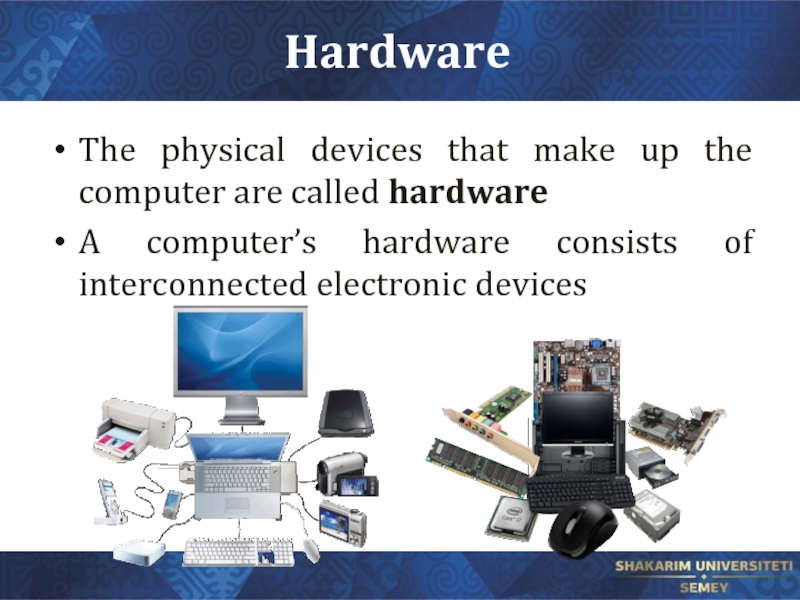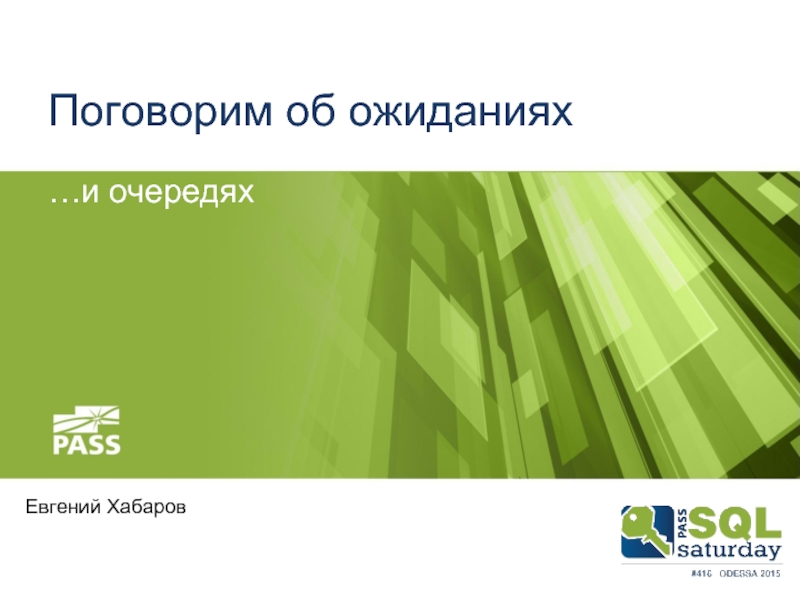- Главная
- Разное
- Дизайн
- Бизнес и предпринимательство
- Аналитика
- Образование
- Развлечения
- Красота и здоровье
- Финансы
- Государство
- Путешествия
- Спорт
- Недвижимость
- Армия
- Графика
- Культурология
- Еда и кулинария
- Лингвистика
- Английский язык
- Астрономия
- Алгебра
- Биология
- География
- Детские презентации
- Информатика
- История
- Литература
- Маркетинг
- Математика
- Медицина
- Менеджмент
- Музыка
- МХК
- Немецкий язык
- ОБЖ
- Обществознание
- Окружающий мир
- Педагогика
- Русский язык
- Технология
- Физика
- Философия
- Химия
- Шаблоны, картинки для презентаций
- Экология
- Экономика
- Юриспруденция
Introduction to computer systems. Architecture of computer systems презентация
Содержание
- 1. Introduction to computer systems. Architecture of computer systems
- 2. Introduction to computer systems. Architecture of computer
- 3. Vocabulary Hardware Software Processor Memory
- 4. 1. Review of computer systems A computer
- 5. What is a Computer System? A complete
- 6. Hardware The physical devices that make
- 7. Hardware Main categories of computer hardware are
- 8. Software A set of instructions that makes
- 9. Software 1. System software Programs primarily
- 10. 2 Evolution of computers
- 11. 3. Architecture and components of computer systems
- 12. Supercomputer A super computer can perform
- 13. Mainframe A mainframe computer is a large
- 14. Minicomputers A minicomputer is a mid-sized
- 15. Workstations The machines are used by
- 16. Personal Computer (PC) Personal computers (PC) also
- 17. 1. Desktop PC A desktop personal
- 18. 2. Notebook/laptop PC A notebook personal
- 19. 3. Handheld PC A handheld personal
- 20. 4. Tablet PC A tablet personal
- 21. 3.Use of computer systems
- 22. Independent work of student №1 Organization for
Слайд 1Lecture 2. Introduction to computer systems. Architecture of computer systems
Zenkovich Kulken
Слайд 2Introduction to computer systems. Architecture of computer systems
Review of computer systems
Evolution
Architecture and components of computer systems
Use of computer systems
Слайд 3Vocabulary
Hardware
Software
Processor
Memory
Input/output devices
System software
Application software
Supercomputers
Mainframe computers
Minicomputers
Workstations
Notebook/laptop
Handheld PC
Desktop PC
Tablet PC
Аппаратное обеспечение
Программное обеспечение
Процессор
Память
Устройства ввода/вывода
Системное программное обеспечение
Прикладное программное обеспечение
Суперкомпьютеры
Мэйнфреймы
Миникомпьютеры
Рабочие станции
Ноутбук/Портативные ПК
Карманные ПК
Настольный персональный компьютер
Планшетный ПК
Слайд 41. Review of computer systems
A computer is an electronic device that
Слайд 5What is a Computer System?
A complete computer system consists of four
1.Hardware
2.Software
3.Users
4.Data
Слайд 6Hardware
The physical devices that make up the computer are called
A computer’s hardware consists of interconnected electronic devices
Слайд 7Hardware
Main categories of computer hardware are
Processor
Memory (also called main
Storage ( also called secondary memory)
Input/output devices
Слайд 8Software
A set of instructions that makes the computer perform tasks (also
Слайд 9Software
1. System software
Programs primarily for the computer’s use, helping it
2. Application software
Programs developed for the users, enabling them to perform tasks such as word processors, library systems…
3. Utility software: is software such as anti-virus software, firewalls, disk defragmenters and so on which helps to maintain and protect the computer system but does not directly interface with the hardware.
Слайд 113. Architecture and components of computer systems
Main categories of computers are:
1.
2. Mainframe computers
3. Minicomputers
4. Workstations
5. Microcomputers, or personal computers (PC)
Слайд 12Supercomputer
A super computer can perform more than one trillion calculation
Typical uses for supercomputers include mapping of human genome, weather forecasting, and modeling complex processes like nuclear fission.
Tianhe-2
Слайд 13Mainframe
A mainframe computer is a large computer capable of simultaneously processing
Mainframe computers are used in large organization where many people need access to the same data
IBM z13s
Слайд 14Minicomputers
A minicomputer is a mid-sized computer designed to accept input
The capabilities of a mini computer are in between the Mainframe and the personal computers.
Intel NUC Kit NUC6i5SYH- Mini PC
Слайд 15Workstations
The machines are used by scientists, engineers and animators who
Lenovo ThinkPad W700ds
CompuLab Airtop
Слайд 16Personal Computer (PC)
Personal computers (PC) also called microcomputers are designed to
Various forms of personal computers are
Desktop PC
Notebook/laptop PC
Handheld PC
Tablet PC
Слайд 171. Desktop PC
A desktop personal computer fits on a desk
The main unit can be housed horizontally under a monitor or it can be housed in a vertical case.
Desktop personal computers are commonly used in offices, schools, and homes.
Слайд 182. Notebook/laptop PC
A notebook personal computer (also called laptop) is
Lenovo IdeaPad Y700 -17 ″
Слайд 193. Handheld PC
A handheld personal computer features a small keyboard
Handheld PCs are also called palmtop computers.
A popular type of handheld computer is the personal digital assistant (PDA).
Vulcan FlipStart
Слайд 204. Tablet PC
A tablet personal computer is a portable computing
The tablet PC is the newest development in portable, full featured computers.
Tablet PCs offer all the functionality of a notebook PC, but they are lighter than the notebook PC.
A tablet PC can accept input from the electronic pen or from the user’s voice.
ASUS Nexus 7 Android



























